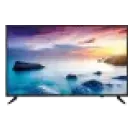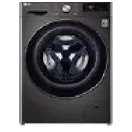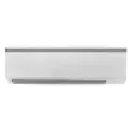Explore a wide selection of TV models on Bajaj Mall or stop by any of Bajaj Finserv’s 1.5 lakh partner stores across 4,000 cities in India to discover a wide selection of TVs. Choose the model that best fits your needs and take advantage of zero down payment offers, making your purchase more affordable by converting the cost into Easy EMIs.
3 min
04-Nov-2024
VHF (Very High Frequency) and UHF (Ultra High Frequency) are two distinct frequency bands used in TV broadcasting. VHF provides long range signals, ideal for rural and remote areas, while UHF excels in urban environments, delivering more channels with superior picture quality. Understanding these differences helps ensure you choose the right TV and antenna for your location, offering the best possible viewing experience with clearer reception and fewer interruptions. Whether you are after reliability or a wider range of channels, both frequency bands play a vital role in modern television broadcasting.
Explore a wide selection of TV models on Bajaj Mall or stop by any of Bajaj Finserv’s 1.5 lakh partner stores across 4,000 cities in India to discover a wide selection of TVs. Choose the model that best fits your needs and take advantage of zero down payment offers, making your purchase more affordable by converting the cost into Easy EMIs.
Explore a wide selection of TV models on Bajaj Mall or stop by any of Bajaj Finserv’s 1.5 lakh partner stores across 4,000 cities in India to discover a wide selection of TVs. Choose the model that best fits your needs and take advantage of zero down payment offers, making your purchase more affordable by converting the cost into Easy EMIs.
VHF vs UHF TV: Understanding the concept
When discussing television broadcasting, it is essential to understand the key differences between VHF (Very High Frequency) and UHF (Ultra High Frequency) bands. The VHF band is typically used for long range communication, primarily for radio, but it plays a lesser role in television transmissions today. On the other hand, UHF is widely utilised in modern TV broadcasting, providing better signal quality in urban areas where line of sight transmission is crucial.
Many consumers are unaware of how different frequencies affect their viewing experience. For instance, when you purchase a new television, you might not consider whether the broadcast is on VHF (Very High Frequency) or UHF. However, understanding this can help improve signal reception and make your viewing experience more seamless, especially in areas prone to signal interference.
The benefits of choosing a TV that supports both VHF and UHF frequencies can be maximised if you are using an Android TV, which often includes features for optimising signal reception for both frequency bands.
In contrast, UHF (Ultra High Frequency) is designed to handle higher data transmission rates, making it more suitable for urban environments where there is a demand for more TV channels and higher quality picture resolution. UHF is often employed for HD broadcasting, making it the go to choice for users who prefer crystal clear quality on their touch screen TV.
One of the reasons UHF is favoured in cities is its ability to penetrate buildings and other urban obstructions more effectively. This is especially true if you are watching content on an advanced television model, such as an Android TV, which is optimised for high frequency reception.
Many consumers are unaware of how different frequencies affect their viewing experience. For instance, when you purchase a new television, you might not consider whether the broadcast is on VHF (Very High Frequency) or UHF. However, understanding this can help improve signal reception and make your viewing experience more seamless, especially in areas prone to signal interference.
Key differences between VHF vs. UHF TVs
The primary distinction between VHF and UHF TV lies in their frequency range and application. VHF operates in a lower frequency band, making it more suitable for long range transmission. UHF, conversely, operates at a higher frequency, making it ideal for densely populated urban environments where signals need to cut through physical obstructions like buildings.- VHF coverage: VHF signals can travel further due to their lower frequency, but they are more prone to interference from geographical obstacles.
- UHF channel variety: UHF offers a greater variety of channels and is better suited for urban areas, thanks to its higher frequency.
- Signal quality: While VHF signals are less affected by weather conditions, UHF signals typically provide better picture and sound quality on modern Smart TV devices.
Comparison table: VHF channels vs. UHF channels
| Frequency band | VHF channels | UHF channels |
| Range | 30 MHz - 300 MHz | 300 MHz - 3 GHz |
| Channel numbers | 213 | 1483 |
| Coverage area | Wider range | Shorter range |
| Signal strength | Susceptible to interference | Better in urban areas |
| Application | Rural and long range transmission | Urban areas and higher quality broadcasting |
The benefits of choosing a TV that supports both VHF and UHF frequencies can be maximised if you are using an Android TV, which often includes features for optimising signal reception for both frequency bands.
VHF frequencies are typically better for long range broadcasting, while UHF offers a larger number of channels in urban areas
VHF (Very High Frequency) has been used for decades in broadcasting and is known for its ability to travel longer distances with minimal signal degradation. This makes it an excellent option for areas where broadcasters are far away from the receivers, such as rural locations. Since VHF waves are longer, they are less likely to be absorbed by obstacles, providing more consistent coverage in areas with uneven terrain or obstructions.In contrast, UHF (Ultra High Frequency) is designed to handle higher data transmission rates, making it more suitable for urban environments where there is a demand for more TV channels and higher quality picture resolution. UHF is often employed for HD broadcasting, making it the go to choice for users who prefer crystal clear quality on their touch screen TV.
One of the reasons UHF is favoured in cities is its ability to penetrate buildings and other urban obstructions more effectively. This is especially true if you are watching content on an advanced television model, such as an Android TV, which is optimised for high frequency reception.
Explore TVs on EMI with Bajaj Finserv
For those in search of a reliable TV, Bajaj Mall offers a wide range of options. Once you have browsed the products, head to your nearest Bajaj Finserv partner store to select your preferred model. With flexible financing from Bajaj Finserv, you can easily purchase your desired TV without budget concerns. You can also enjoy the convenience of choosing a repayment tenure that fits your financial plan, making it simple to settle the cost with affordable EMIs. Bajaj Finserv provides a seamless financing experience for electronics.Advantages of shopping with Bajaj Finserv
- Affordable pricing: Get your desired VHF and UHF TV at competitive prices from Bajaj Finserv partner stores, easing the burden on your wallet.
- Easy EMIs: Spread the cost of your VHF and UHF TV over flexible EMIs with Bajaj Finserv’s convenient financing options.
- Zero down payment: Choose select VHF and UHF TVs with no upfront payment and pay gradually over time without a lump sum.
- Wide range and accessibility: Explore a broad selection of VHF and UHF TVs at numerous partner stores for a hassle-free shopping experience.
- Special deals and cashback: Enjoy exclusive deals and cashback offers when purchasing a VHF and UHF TV through Bajaj Finserv’s financing solutions.
- Complimentary home delivery: Take advantage of free home delivery on selected VHF and UHF TVs, adding to the convenience of your purchase.
Frequently asked questions
What is the difference between VHF and UHF TV signals?
VHF (Very High Frequency) TV signals operate between 30 MHz and 300 MHz, providing longer range and better penetration in rural areas. UHF (Ultra High Frequency) signals, on the other hand, range from 300 MHz to 3 GHz and are more suited for urban environments, offering a larger number of channels with higher picture quality.
Which offers better reception: VHF or UHF TV?
UHF provides better reception in densely populated urban areas due to its higher frequency and ability to handle multiple channels. However, VHF signals travel further and are often more stable in rural or open regions.
Are UHF channels more popular than VHF channels?
Yes, UHF channels tend to be more popular today because they offer a broader range of channels, including high definition content. UHF is commonly used in modern broadcasting, especially in cities where demand for a variety of channels is higher.
Show More
Show Less











